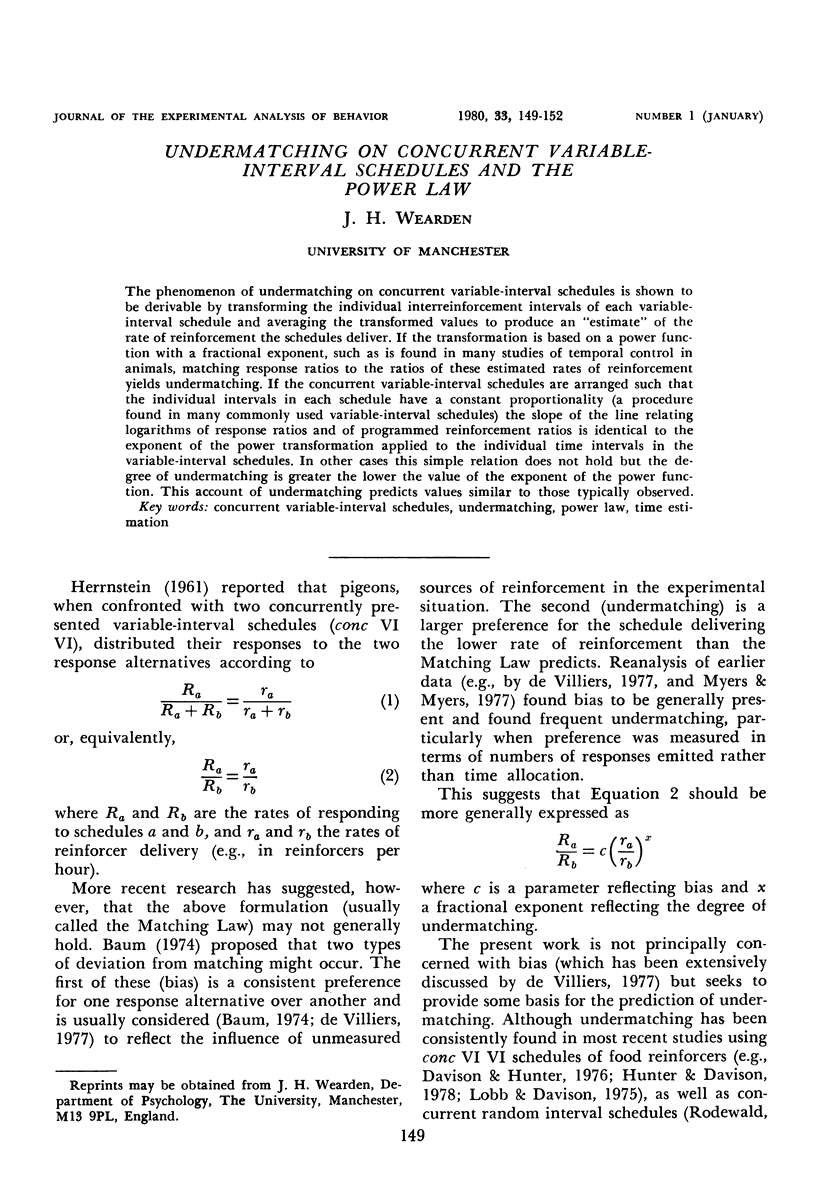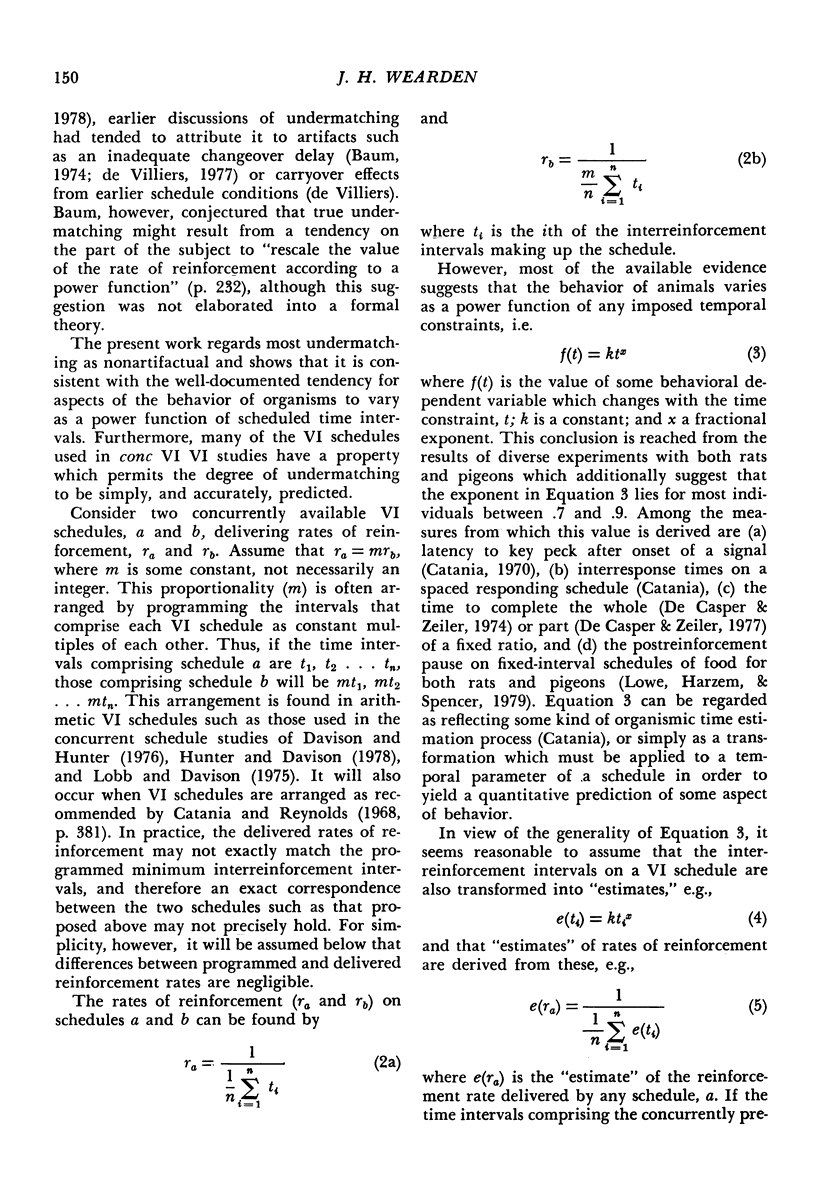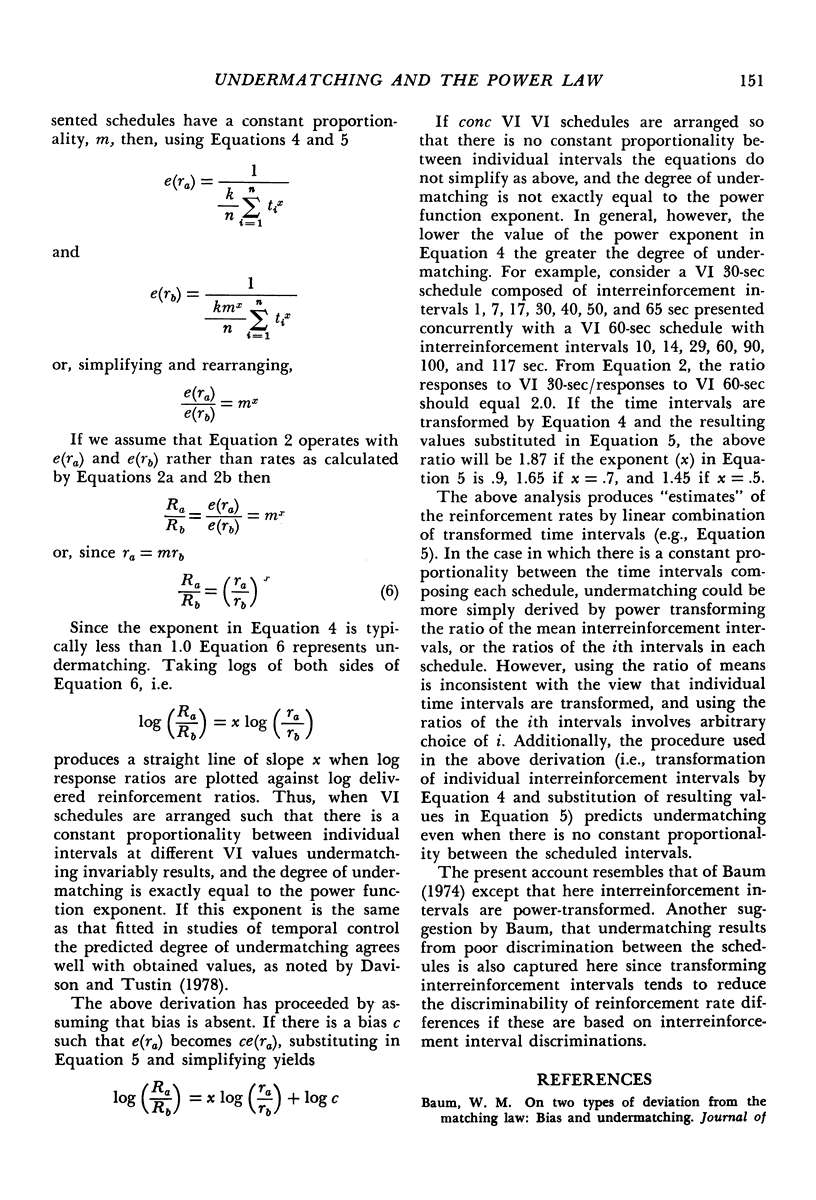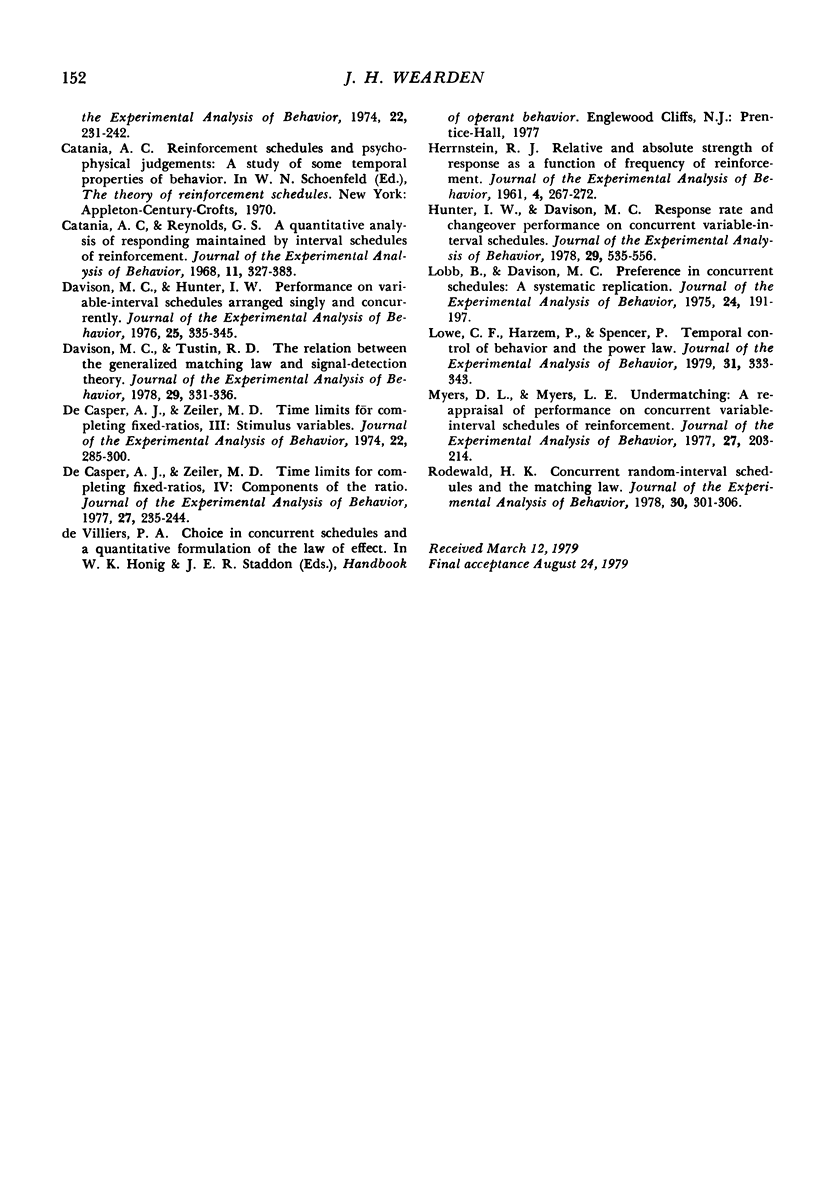Abstract
The phenomenon of undermatching on concurrent variable-interval schedules is shown to be derivable by transforming the individual interreinforcement intervals of each variable-interval schedule and averaging the transformed values to produce an "estimate" of the rate of reinforcement the schedules deliver. If the transformation is based on a power function with a fractional exponent, such as is found in many studies of temporal control in animals, matching response rations to the ratios of these estimated rates of reinforcement yields undermatching. If the concurrent variable-interval schedules are arranged such that the individual intervals in each schedule have a constant proportionality (a procedure found in many commonly used variable-interval schedules) the slope of the line relating logarithms of response ratios and of programmed reinforcement ratios is identical to the exponent of the power transformation applied to the individual time intervals in the variable-interval schedules. In other cases this simple relation does not hold but the degree of undermatching is greater the lower the value of the exponent of the power function. This account of undermatching predicts values similar to those typically observed.
Full text
PDF



Selected References
These references are in PubMed. This may not be the complete list of references from this article.
- Baum W. M. On two types of deviation from the matching law: bias and undermatching. J Exp Anal Behav. 1974 Jul;22(1):231–242. doi: 10.1901/jeab.1974.22-231. [DOI] [PMC free article] [PubMed] [Google Scholar]
- Catania A. C., Reynolds G. S. A quantitative analysis of the responding maintained by interval schedules of reinforcement. J Exp Anal Behav. 1968 May;11(3 Suppl):327–383. doi: 10.1901/jeab.1968.11-s327. [DOI] [PMC free article] [PubMed] [Google Scholar]
- Davison M. C., Hunter I. W. Performance on variable-interval schedules arranged singly and concurrently. J Exp Anal Behav. 1976 May;25(3):335–345. doi: 10.1901/jeab.1976.25-335. [DOI] [PMC free article] [PubMed] [Google Scholar]
- Davison M. C., Tustin R. D. The relation between the generalized matching law and signal-detection theory. J Exp Anal Behav. 1978 Mar;29(2):331–336. doi: 10.1901/jeab.1978.29-331. [DOI] [PMC free article] [PubMed] [Google Scholar]
- Decasper A. J., Zeiler M. D. Time limits for completing fixed ratios. III. Stimulus variables. J Exp Anal Behav. 1974 Sep;22(2):285–300. doi: 10.1901/jeab.1974.22-285. [DOI] [PMC free article] [PubMed] [Google Scholar]
- Decasper A. J., Zeiler M. D. Time limits for completing fixed ratios. IV. Components of the ratio. J Exp Anal Behav. 1977 Mar;27(2):235–244. doi: 10.1901/jeab.1977.27-235. [DOI] [PMC free article] [PubMed] [Google Scholar]
- HERRNSTEIN R. J. Relative and absolute strength of response as a function of frequency of reinforcement. J Exp Anal Behav. 1961 Jul;4:267–272. doi: 10.1901/jeab.1961.4-267. [DOI] [PMC free article] [PubMed] [Google Scholar]
- Hunter I. W., Davison M. C. Response rate and changeover performance on concurrent variable-interval schedules. J Exp Anal Behav. 1978 May;29(3):535–556. doi: 10.1901/jeab.1978.29-535. [DOI] [PMC free article] [PubMed] [Google Scholar]
- Lobb B., Davison M. C. Performance in concurrent interval schedules: a systematic replication. J Exp Anal Behav. 1975 Sep;24(2):191–197. doi: 10.1901/jeab.1975.24-191. [DOI] [PMC free article] [PubMed] [Google Scholar]
- Lowe C. F., Harzem P., Spencer P. T. Temporal control of behavior and the power law. J Exp Anal Behav. 1979 May;31(3):333–343. doi: 10.1901/jeab.1979.31-333. [DOI] [PMC free article] [PubMed] [Google Scholar]
- Myers D. L., Myers L. E. Undermatching: a reappraisal of performance on concurrent variable-interval schedules of reinforcement. J Exp Anal Behav. 1977 Jan;27(1):203–214. doi: 10.1901/jeab.1977.27-203. [DOI] [PMC free article] [PubMed] [Google Scholar]
- Rodewald H. K. Concurrent random-interval schedules and the matching law. J Exp Anal Behav. 1978 Nov;30(3):301–306. doi: 10.1901/jeab.1978.30-301. [DOI] [PMC free article] [PubMed] [Google Scholar]


